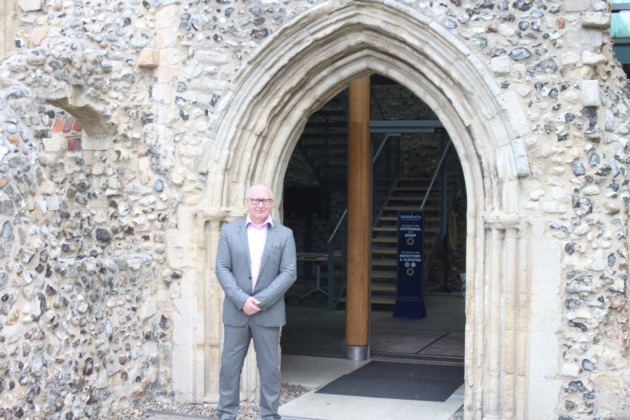
The evolving demands on energy supply and distribution in East Anglia were at the heart of an industry conference in Norwic
Led by city-based Pixie Energy as an update on some of its projects, the event at Norwich Cathedral also saw guest speakers from UK Power Networks and the public sector explaining their own energy challenges and innovations.
Pixie Energy – launched in 2016 as a spin-out from Future50 firm Cornwall Insight – was designed to share knowledge and insight developed at a national level with local energy market players, according to founder Nigel Cornwall.
“We have seen increasingly a narrative coming out of government emphasising the importance of decentralised markets and local supply,” Mr Cornwall said.
“There is a lot of generation at a local level and a lot of aspiration among local authorities, housing associations to take more of a direct role in realising the benefits of the sustainability agenda at the local level.
“I wanted to see if we could use our knowledge and relationships at a local level to support energy supply transformation and allow local stakeholders to meet their aspirations.”
Mr Cornwall said some of the ideas around Pixie Energy were at the point of being “transposed into specific projects”.
The most significant of these is its Norwich Virtual Energy Community Project, which aims to experiment with a new energy distribution model.
The pilot will see battery storage capacity and solar panels installed in over 15 homes by the end of this year, with another spin-off company, New Anglia Energy (NAE), supplying the equipment with no up-front fee.
Energy generated by the panels will then be supplied to the customers by NAE at a reduced rate. Green Star Energy, a licensed supplier, will offer “innovative” local tariffs for customers for any electricity they import from the grid.
Pixie hopes to double the number of households in the pilot by April 2019 – when the government’s feed-in tariff (FiT) support scheme for energy projects will close to new applicants – and to double it again by 2020.
Further project stages may include the addition of existing energy generators, many of which have expressed interest in being involved with the project.
Mr Cornwall said: “We have been looking at how we can structure a scheme to see whether we can try something different and innovative, whether there is a multi-supplier solution that can be delivered.”
Alex Jakeman of UK Power Networks said the company – which holds three energy distribution licences in the East of England, London and South East – was preparing itself for greater strains on its systems including electric vehicles.
It estimates there will be two million electric vehicles on the road in its area by 2030, dramatically increasing the gigawatt demand on its distribution system, as well as an increased number of battery storage devices hooking up to the network.
Mr Jakeman said: “The pace of change is fast and we have to adapt to it. We are changing to a low-carbon economy, we have a changing regulatory environment and big changes in technology as well, and also changes in what the customers expect from us.”
Original article: https://www.edp24.co.uk/business/pixie-energy-norwich-virtual-energy-community-project-fit-1-5691014





